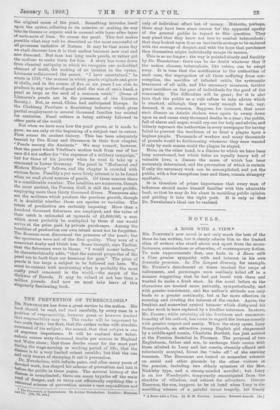THE BOOK OF THE PEATIL.t Tim co n stitution of the pearl
is net unlike that of the diamond in its simplicity. More than nine-tenths is made up of carbonate of lime, and something less than one-fortieth is water. In what remains, described as organic matter; we find * Sir Christopher Wren. By Lena Milman. London : Duckwerat and CO. [Th. Gd. net.] t The Book of the Pearl. By George Frederick Kunz, Ph.D.. and Charles Hugh Stevenson, D.C.L. London : Macmillan and Co. [42s. net. j
the original cause of the pearl. Something intrudes itself upon the oyster, adhering to its exterior, or making its way into its tissues or organs, and is covered with layer after layer of carbonate of lime. So comes the pearl. This fact makes possible what may well be described as the most successful of all processes imitative of Nature. It may be that some day we shall discover how it is that carbon becomes now coal and now diamond. But man has long made pearls, or rather got the mollusc to make them for him. A story has come down front classical antiquity in which we recognise one undoubted element of truth, the making of an incision in the oyster. Linnaeus rediscovered the secret. "I have ascertained," he wrote in 1748," the manner in which pearls originate and grow in shells, and in the course of five or six years I am able to produce in any mother-of-pearl shell the size of one's hand, a pearl as large as the seed of a common vetch." (Some of Linnaeus's pearls are in the possession of the Linnectu Society.) But, as usual, China had anticipated Europe. In the Chekiang Province a flourishing industry which gives Partial employment to several thousand families has existed for centuries. Pearl culture is being actively followed in other parts of the world.
But when we have seen how the pearl grows, or is made to grow, we are only at the beginning of a subject vast in extent. First comes its ancient history. This has been adequately treated by Dr8. Kunz and Stevenson in their first chapter, "Pearls among the Ancients." We may remark, however, that the pearl which Vitellius's mother took froth one of her ears did not suffice for "the expenses of a military campaign," but for those of his journey when he went to take up a command in Lower Germany. The pearl in "Mediaeval and Modern History" follows, and the chapter is crowded with
curious facts. Possibly a yet more lively interest is to be found When we read about sources of pearls. Of these sources there is a considerable number.. The localities are numerous, though the most ancient, the Persian Gulf, is still the most prolific, employing more than thirty thousand divers. Numerous also are the molluscs which produce the precious growth, though it is doubtful whether these are species or varieties. The totals of production are certainly imposing. Mcire than a hundred thousand fishermen are employed, and the value of their catch is estimated at upwards of 21,600,000, a sum Which must probably be multiplied by three if one would arrive at the price paid by private purehasers. Among the localities of production our own island must not be forgotten. The Romans soon discovered the presence of the pearl; bet the specimens were not of the first quality. They were of a somewhat dusky and bluish hue. Borne thought, says Tacitus, that the fishermen were to blame. "I would sooner believe," be characteristically adds, "that the natural properties of the Pearl are in fault than our keenness for gain." The price of Pearls is too large a subject to be followed out here. We must be content with mentioning what is probably the most costly pearl ornament in the world,—the carpet of the Gaikwar of Baroda. It may be valued at not less than a million pounds. And now we must take leave of this singularly fascinating book.













































 Previous page
Previous page